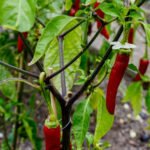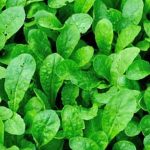Welcome to the Ultimate Vegetable Gardening Guide PDF. If you’re a beginner looking to start your own vegetable garden or a seasoned gardener seeking to expand your knowledge, you’ve come to the right place. This comprehensive guide will provide you with all the information you need to successfully grow your own delicious and nutritious vegetables.
Having a comprehensive guide in PDF format is essential for any aspiring gardener. It allows you to have access to all the crucial information at your fingertips, whether you’re on your computer, tablet, or even printed out for easy reference outdoors. With this guide, you can navigate through every step of the vegetable gardening process, from deciding on the right location to troubleshooting common issues that may arise.
The benefits of vegetable gardening are truly worthwhile and go beyond just having fresh produce readily available in your backyard. Not only does it save money on grocery bills, but it also promotes healthier eating habits as you have control over what fertilizers and pesticides are used.
Gardening also provides stress relief and a sense of achievement when you see your plants grow and thrive. So let’s dive into this ultimate vegetable gardening guide PDF and discover how you can reap these amazing benefits while nurturing your own little patch of green paradise.
Benefits of Vegetable Gardening
Fresh Produce at Your Fingertips
One of the main benefits of vegetable gardening is the ability to have fresh produce right in your own backyard. By growing your own vegetables, you have access to a wide variety of delicious and healthy options.
Unlike store-bought produce that may have been sitting on shelves for days or even weeks, homegrown vegetables are harvested at their peak ripeness, ensuring maximum flavor and nutritional value. With a vegetable garden, you can pick vegetables just moments before cooking them, enhancing their taste and freshness.
Cost-Effectiveness
Another reason why vegetable gardening is worthwhile is its cost-effectiveness. Buying fresh vegetables from a grocery store or farmer’s market can be expensive, especially when certain items are out of season or considered specialty ingredients.
By growing your own vegetables, you can significantly cut down on grocery expenses. The initial investment in seeds and gardening supplies may seem daunting, but over time, the savings will become apparent as your garden provides an abundant supply of produce without the need to constantly purchase from stores.
Health Benefits and Stress Relief
In addition to providing fresh and cost-effective produce, vegetable gardening offers numerous health benefits. Gardening itself is a great form of exercise that engages both the body and mind. It promotes physical activity through tasks like digging, planting, weeding, and harvesting, helping to improve cardiovascular health and increase strength and flexibility.
Vegetable gardening has also been shown to reduce stress levels and improve mental well-being. Spending time outdoors surrounded by nature can have a calming effect on the mind, reducing anxiety while increasing feelings of mindfulness and relaxation.
Overall, the benefits of vegetable gardening make it a worthwhile endeavor for individuals who want to enjoy fresh produce while reaping financial savings and improving their overall health and well-being. Whether you have limited space in a small backyard or access to larger plots of land, vegetable gardening can be tailored to fit your needs and preferences.
By incorporating this rewarding activity into your lifestyle, you can enjoy the fruits of your labor while embracing a more sustainable and self-sufficient approach to food production.
Getting Started with Vegetable Gardening
When it comes to vegetable gardening, getting started on the right foot is essential for success. This section will provide a step-by-step approach to help beginners navigate the world of vegetable gardening with confidence and ease.
1. Selecting an Ideal Location:
Choosing the right location for your vegetable garden is crucial. Look for a spot that receives at least 6-8 hours of sunlight daily. Make sure the area has good drainage and is easily accessible for watering and maintenance. Consider factors like proximity to water source, protection from strong winds, and availability of space for expansion.
2. Prepping the Soil:
Preparing your soil before planting is crucial for healthy plant growth. Start by removing any weeds or grass from the area and loosen the soil using a spade or tiller. Add organic matter such as compost or well-rotted manure to improve soil fertility and structure. It’s also important to test your soil pH and make necessary adjustments using lime or sulfur.
3. Choosing the Right Vegetables:
Selecting suitable vegetables for your garden is essential based on factors like climate, space, and personal preference. Consider growing both cool-season and warm-season crops to ensure a continuous harvest throughout the year. Some popular options for beginners include tomatoes, peppers, lettuce, carrots, zucchini, and herbs like basil and parsley.
4. Planning for the Upcoming Seasons:
Having a well-thought-out plan will maximize your chances of success in vegetable gardening. Create a planting calendar that outlines when to start seeds indoors, when to transplant seedlings outdoors, and when to harvest each crop throughout the year. Take note of companion planting tips – pairing compatible plants together can benefit their growth and deter pests.
By following these steps, you’ll be well on your way to establishing a thriving vegetable garden in no time. Remember that vegetable gardening requires patience, observation, and continuous learning. Don’t be afraid to make mistakes and experiment with different vegetables and techniques – it’s all part of the exciting journey towards homegrown bounty.
Essential Tools and Supplies
When it comes to vegetable gardening, having the right tools and supplies is crucial for success. Whether you’re a beginner or an experienced gardener, having the right equipment and materials will make your gardening experience more efficient and enjoyable. Here are some essential tools and supplies that you’ll need to get started on your vegetable garden.
Firstly, basic gardening equipment is essential for maintaining your vegetable garden. This includes items such as a sturdy shovel or spade for digging, a rake for leveling the soil, a hand trowel for planting small plants or seedlings, and a hoe for removing weeds. Having these tools on hand will make tasks like preparing the soil and removing weeds much easier.
Next, quality soil is vital for healthy plant growth. Invest in good quality compost or organic soil amendments to improve the fertility of your garden beds. These additions will provide essential nutrients and improve water retention in the soil, creating optimal conditions for your vegetables to thrive.
Seeds are another essential supply when it comes to vegetable gardening. Choose high-quality seeds from reputable suppliers that offer a wide variety of vegetable options. Consider factors such as climate suitability, disease resistance, and yield potential when selecting your seeds. It’s also worth investing in heirloom varieties to grow unique and flavorful vegetables.
In addition to quality soil and seeds, fertilizer is necessary to provide essential nutrients that may be lacking in your garden soil. Choose organic fertilizers that will promote healthy growth without harmful chemicals. Ensure you follow the recommended application rates on the packaging to avoid over-fertilizing your plants.
Lastly, protective measures are crucial to safeguard your vegetable garden from pests and extreme weather conditions. Depending on your location, you may need tools such as deer netting or fences to keep out animals that may damage your crops. Additionally, consider investing in row covers or garden fabric that can protect young plants from frost or excessive heat.
By assembling these essential tools and supplies, you’ll be well-equipped to start your vegetable gardening journey. Remember that having the right equipment will not only make your gardening tasks easier but also contribute to the overall success and productivity of your vegetable garden.
Vegetable Gardening Techniques
Once you have selected the ideal location, prepped the soil, and chosen the right vegetables for your garden, it’s time to dive into the techniques that will ensure a successful vegetable gardening experience. From seed starting to harvest, there are several important steps to follow in order to achieve healthy and abundant yields.
- Seed Starting: Starting your own seeds allows you to have complete control over the variety of vegetables you grow and ensures a strong start for your plants. Begin by filling seed trays or small pots with a high-quality seed starting mix. Plant the seeds according to the package instructions, making sure to provide adequate moisture and warmth for germination.
- Transplanting: Once your seedlings have grown their first true leaves and are strong enough to be handled, it’s time to transplant them into their final growing locations. Carefully dig holes in the prepared soil that are deep enough to accommodate the root system of each plant.
Gently remove the seedling from its container, taking care not to damage the roots, and place it in the hole. Backfill with soil, firming gently around the base of each plant. - Proper Watering: Providing consistent and appropriate watering is crucial for healthy plant growth. Generally, vegetables prefer consistently moist soil but not overly saturated conditions. Pay attention to your specific crops’ water needs and adjust accordingly. Water deeply at least once a week or more frequently during hot summer months.
- Pest Control: Keeping pests at bay is essential for protecting your vegetable plants from damage. Monitor your garden regularly for signs of pests such as aphids, caterpillars, or slugs. Use organic pest control methods like handpicking insects off plants or using natural repellents like neem oil or insecticidal soaps.
- Pruning: Pruning can help promote healthier plants and improve yields by removing dead or diseased foliage and providing better air circulation. Regularly trim back any dead or yellowing leaves, as well as any damaged or overcrowded branches. However, be cautious not to prune too heavily, as this can stress the plants.
By following these techniques, you’ll be well on your way to a successful vegetable garden. Remember that each vegetable has specific requirements, so it’s important to research the optimal techniques for each type of plant you are growing. With proper care and attention throughout the growing season, you’ll be able to enjoy the fruits of your labor come harvest time.
Seasonal Calendar
Spring
In the spring, gardeners can kick off their vegetable gardening season by starting seeds indoors. This includes selecting the right seeds for the desired vegetables and using seed trays or pots filled with a quality potting mix. Adequate sunlight, temperature control, and regular watering are essential for successful seed starting. Transplanting the seedlings into larger containers or directly into the garden can be done once they have developed their first few true leaves.
Spring is also an opportune time to prepare the soil for planting. Clear away any weeds or debris, loosen compacted soil with a garden fork, and amend it with organic matter such as compost or well-rotted manure. Adding inorganic fertilizers may also be beneficial but should be done according to package instructions.
Summer
In the summer months, it’s important to ensure that your vegetable garden receives adequate water and is well-maintained. Proper watering techniques vary based on factors like plant type and weather conditions. Consistent watering helps prevent drought stress and ensures healthy plant growth. Mulching around plants can help conserve soil moisture and suppress weed growth.
Regular pest control is another key aspect of summer vegetable gardening. Inspect plants frequently for signs of pests like aphids or caterpillars and incorporate natural pest control methods when possible, such as introducing beneficial insects or using organic insecticidal soaps.
Fall/Winter
As fall approaches, gardeners should start planning for the transition to cool-season crops. Remove any spent plants from summer harvests and prepare the soil by incorporating compost or other organic matter while removing weeds.
Cool-season vegetables like lettuce, spinach, peas, broccoli, and kale thrive in colder temperatures. Plant these crops according to package instructions to ensure bountiful winter harvests.
Winter maintenance involves protecting cold-sensitive plants from frost by using row covers or cloths during the coldest nights. Additionally, gardeners can take advantage of this time to plan for the upcoming year’s vegetable garden by reviewing successes and failures from the previous seasons and creating a crop rotation plan.
By following a seasonal calendar for vegetable gardening, enthusiasts can stay organized and maximize their yields throughout the year. Each season brings unique tasks and challenges, but with proper planning and care, a successful vegetable garden is well within reach.
Troubleshooting Common Issues
When it comes to vegetable gardening, there are a variety of common issues that gardeners may encounter along the way. Pests, diseases, and nutrient deficiencies can all wreak havoc on your plants if not addressed properly. In this section of the Ultimate Vegetable Gardening Guide PDF, we will explore some of these common issues and provide effective solutions to help you maintain healthy plant growth.
Pests are perhaps one of the greatest challenges that vegetable gardeners face. Common pests include aphids, slugs, snails, and caterpillars. These critters can quickly damage or destroy your crops if left unchecked. One effective solution is to introduce beneficial insects like ladybugs or lacewings into your garden, as they feed on many common garden pests. Additionally, utilizing physical barriers such as row covers or netting can prevent pests from accessing your plants.
In addition to pests, diseases can also plague vegetable gardens. Fungal infections like powdery mildew and bacterial diseases like blight are particularly common. To prevent the spread of disease in your garden, it is important to practice good sanitation habits such as regularly cleaning your tools and removing any infected plant material. Additionally, rotating your crops each year can help reduce the likelihood of disease recurrence.
Nutrient deficiencies can manifest in various ways and negatively impact plant growth and productivity. Common deficiencies include nitrogen deficiency (yellowing leaves), phosphorus deficiency (poor root development), and potassium deficiency (leaf curling). One solution is to amend your soil with organic matter such as compost or well-rotted manure to replenish essential nutrients. Another option is to use organic fertilizers specifically formulated for vegetable gardens that provide balanced nutrition.
By addressing these common issues effectively, you can ensure healthy plant growth in your vegetable garden and maximize your yields. The Troubleshooting Common Issues section of the Ultimate Vegetable Gardening Guide PDF offers practical solutions for dealing with pests, diseases, and nutrient deficiencies, empowering you to overcome these challenges and achieve successful gardening outcomes.
| Common Issues | Solutions |
|---|---|
| Pests | – Introduce beneficial insects
|
| Diseases | – Practice good sanitation habits
|
| Nutrient Deficiencies | – Amend soil with organic matter
|
Tips for Sustainable and Organic Gardening Practices
Gardening is not only a rewarding hobby but can also be an opportunity to practice sustainable and organic gardening methods. By implementing these practices, you can minimize the negative impact on the environment while producing healthy and nutritious vegetables. Here are some tips to help you incorporate sustainable and organic gardening practices into your vegetable garden.
One crucial aspect of sustainable gardening is composting. Instead of relying on synthetic fertilizers, composting allows you to use organic materials that enrich the soil naturally. Start by gathering kitchen scraps such as fruit and vegetable peels, coffee grounds, and eggshells. Combine them with yard waste like grass clippings, leaves, and small branches. Over time, these materials will break down into nutrient-rich compost that can be added to your soil for improved fertility.
Companion planting is another technique to consider for an eco-friendly garden. Certain plants have natural pest-repellent properties or attract beneficial insects that can help control pests. For example, marigolds repel harmful nematodes while attracting bees and butterflies beneficial for pollination. Planting basil near tomatoes not only improves their flavor but also deters pests like aphids and whiteflies.
Additionally, crop rotation is essential in organic gardening to prevent the buildup of diseases or pests in the soil. It involves changing the location of crops each growing season to disrupt pest life cycles and reduce disease transmission. Plan your garden layout in advance and divide it into different sections according to plant families or specific crop requirements.
Lastly, opting for natural pest control methods can minimize harm to beneficial insects as well as human health. Consider using insecticidal soaps or neem oil sprays for controlling common pests like aphids or caterpillars. Implement physical barriers such as row covers or netting to protect plants from larger pests like rabbits or deer.
By following these tips, you can create a sustainable and environmentally friendly vegetable garden that promotes the health of both your plants and the planet. Incorporating organic gardening practices will not only benefit your garden but also contribute to a more sustainable future for generations to come.
Resources and Recommendations
When it comes to vegetable gardening, having a comprehensive guide in PDF format can be incredibly valuable. Not only do these guides provide all the necessary information in an easy-to-read and accessible format, but they also serve as a reference that can be carried with you wherever you go. In this section, we will provide a curated list of must-have vegetable gardening guide PDFs for both beginners and experienced gardeners.
One highly recommended resource is the “The Vegetable Gardener’s Bible” by Edward C. Smith. This guide covers every aspect of vegetable gardening, from planning and planting to harvesting and preserving. It provides detailed information on soil preparation, crop rotation, pest control, and more. The book also includes helpful illustrations and charts that make it easy for readers to understand and follow along.
For those interested in organic gardening, “Rodale’s Basic Organic Gardening” by Deborah L. Martin is an excellent choice. This guide focuses on sustainable gardening practices that promote healthy soil, plants, and ecosystems. It covers topics like composting, natural pest control methods, companion planting, and seed saving. With clear instructions and plenty of helpful tips, this PDF guide is perfect for those looking to grow their vegetables organically.
If you’re looking for a comprehensive seasonal guide that outlines specific tasks for each month of the year, “The Vegetable Gardener’s Month-by-Month” by John Torgrimson is a great resource. This guide provides month-to-month advice on everything from preparing the soil in spring to protecting plants from frost in winter. It also includes recommendations for planting schedules based on your location.
Conclusion
In conclusion, vegetable gardening is a rewarding and worthwhile activity that offers a multitude of benefits. From the joy of harvesting fresh produce to the cost-effectiveness, health advantages, and stress relief it provides, vegetable gardening offers something for everyone. With the comprehensive Vegetable Gardening Guide PDF, beginners can easily get started with step-by-step instructions on everything from selecting an ideal location to planning for different seasons.
Having the necessary tools and supplies is essential for successful vegetable gardening. From basic gardening equipment to quality soil, seeds, fertilizer, and protective measures, the guide ensures that gardeners have everything they need to thrive. Additionally, by implementing various techniques like seed starting, transplanting, proper watering, pest control, and pruning, gardeners can ensure healthy plant growth and bountiful yields.
The Vegetable Gardening Guide PDF also provides a handy seasonal calendar outlining specific tasks and planting schedules for each season. This organizational tool allows gardeners to stay on top of their gardening responsibilities throughout the year and maximize their harvests. Moreover, the guide addresses common issues such as pests, diseases, and nutrient deficiencies while promoting sustainable and organic gardening practices.
By following the tips provided in this comprehensive guide and utilizing additional recommended resources available in other vegetable gardening guide PDFs, readers will be well-equipped to embark on their own vegetable gardening journey. So why wait? Start your vegetable garden today armed with knowledge and inspiration from this valuable resource. Happy gardening.
Frequently Asked Questions
What is a good layout for a vegetable garden?
A good layout for a vegetable garden should take into consideration factors such as the available space, sunlight exposure, soil conditions, and access to water. Generally, it is recommended to arrange the garden in long, narrow beds or rows with well-defined paths between them for easy navigation and maintenance. Raised beds can be beneficial as they improve drainage and allow for better soil quality control.
Grouping plants based on their sun requirements is also important – taller crops should be placed where they won’t cast too much shade over shorter ones. Additionally, consider creating a diverse garden by interspersing different vegetables rather than planting large monocultures, as this can help deter pests and diseases.
What vegetables should be planted together?
Some vegetables benefit from being planted together due to their complementary characteristics or similar cultural requirements. For example, the “Three Sisters” combination of corn, beans, and squash is a classic arrangement that mutually benefits each plant: beans provide nitrogen fixation to the soil, corn acts as a natural trellis for the climbing beans, and squash shades out weeds while conserving moisture in the soil.
Other suitable pairings include tomatoes with basil or marigolds (to repel pests), carrots with onions or leeks (as companion plants), and lettuce with radishes (radishes help break up compacted soil). Avoid planting vegetables from the same family too close together to minimize disease transmission.
What vegetables should I garden for beginners?
When it comes to gardening for beginners, it is best to start with vegetables that are relatively easy to grow and maintain. Some beginner-friendly options include salad greens like lettuce and spinach, which grow quickly and have shallow root systems; radishes that mature rapidly within a few weeks; bush zucchini or summer squash varieties that produce abundantly; cherry tomatoes that are less prone to disease than larger ones; and snap peas or green beans that offer both ornamental value and tasty harvests.
Herbs like basil and mint are also great choices for beginners as they are forgiving and can be grown in pots if space is limited. Remember to select varieties suitable for your climate and follow proper planting and care instructions for successful gardening endeavors.

If you’re looking to get into vegetable gardening, or are just looking for some tips on how to make your current garden better, then you’ve come to the right place! My name is Ethel and I have been gardening for years. In this blog, I’m going to share with you some of my best tips on how to create a successful vegetable garden.





